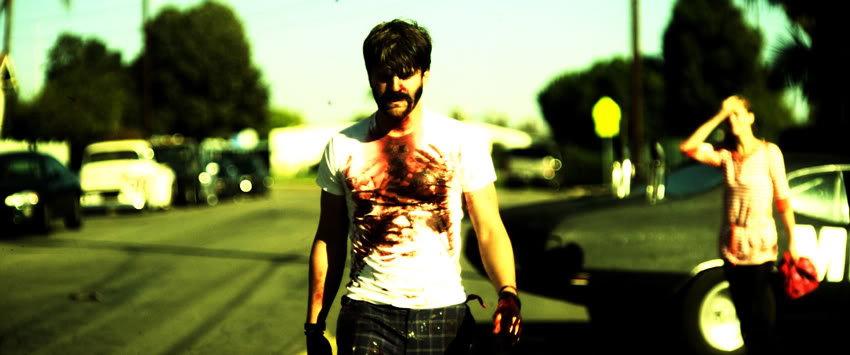
Bellflower was shot, in part, with custom-built cinema cameras that evoke the tilt-shift style.
Originally published on Turnstylenews.com, a digital information service surfacing emerging stories in news, entertainment, art and culture; powered by award-winning journalists.
By: Noah J Nelson
It can be easy to get jaded about the state of indie filmmaking. The past half decade has seen the rise of stripped down mumble-core auteurs, improvising small scale stories that use the latest in digital filmmaking to remove the layer of abstraction that filmmaking creates between audience and story. Yet, the increased intimacy -- the reliance on small moments -- has meant abandoning the power of melodramatic poetics from American cinema.
On paper, Bellflower could seem to be in the same vein. It's a love story that runs the full course from hook-up to betrayal and break up, set against the backdrop of the lives of rudderless 20-somethings who spend their seemingly endless free time working on impractical DIY projects. It even has one of those elusive "What does this really mean?" names in the form of Bellflower.
Thankfully, writer-director-star Evan Glodell has bigger ambitions than a quiet break-up film. Bellflower is the return of sturm und drang to the American Indie scene; it's a personal story told with the fury of Mad Max. Bellflower explodes onto the screen with a bold visual style backed by Glodell's skill as a real DIYer: not only did he build the major props in the film -- modding the muscle car dubbed Mother Medusa, and a real working flamethrower--he also custom built cameras to make this a break-up tale that looks like a grindhouse action flick.
"The hardest [thing is] to build a camera," Glodell says. "The biggest camera was only used to shoot one scene and then ended up using it for a montage later on. We thought we could get away with not ruining the look because it was so different. But that was entirely done to just have some subtle differentiation where it seemed more unreal."
The style evokes the tilt-shift looks that have become popular in online photography and videography in the past few years. Yet this isn't a case of an upstart filmmaker riding the coattails of trend. Bellflower began production back in 2008.
"It's kinda sad because when we were doing it no one knew what it was. So I was on the forward edge of it and now I'm on the trailing edge of it. A lot of the stuff that people think is tilt-shift is actually large format photography."